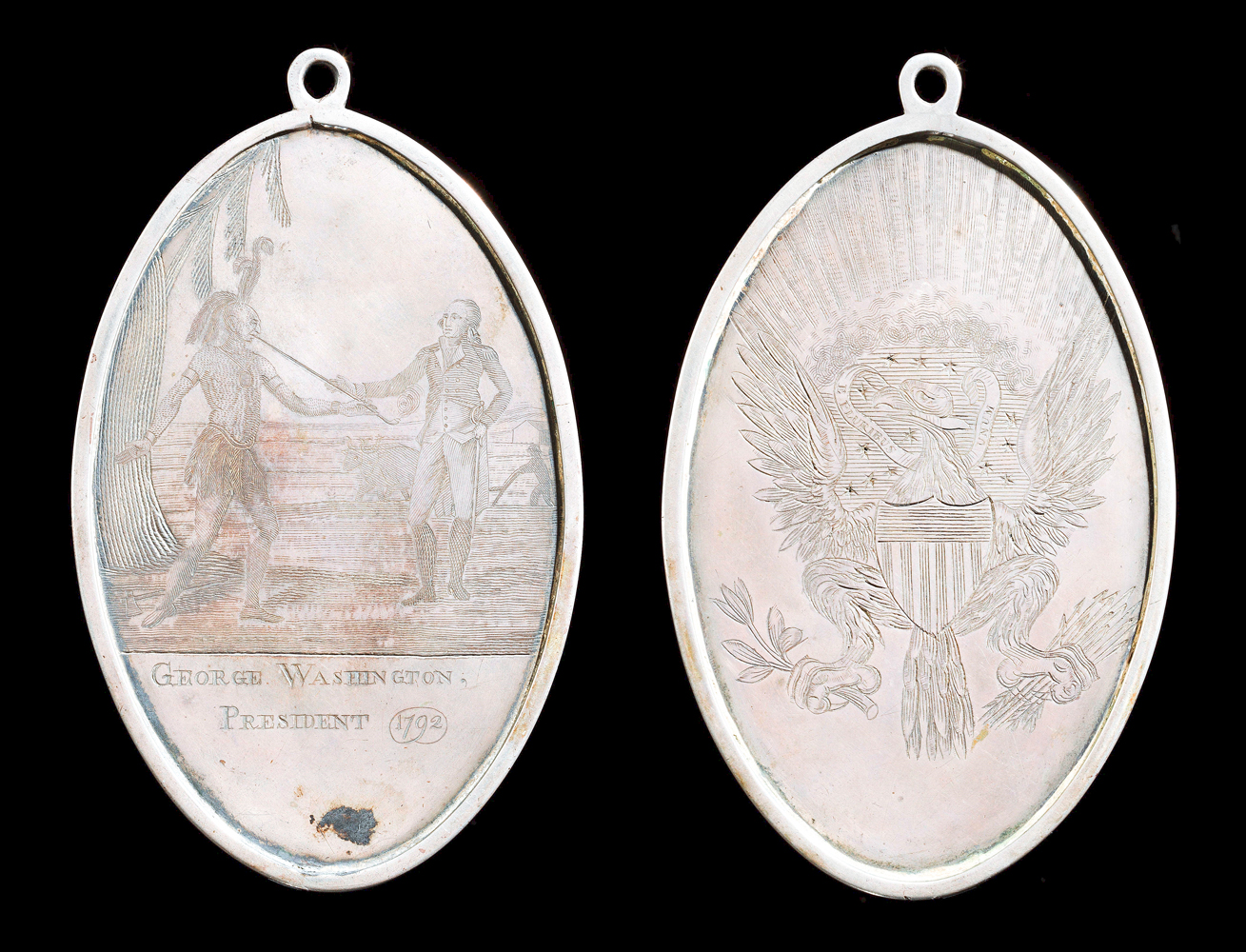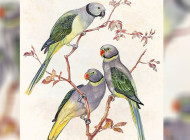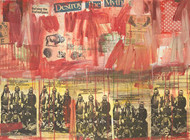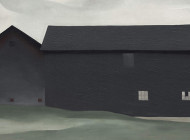
George Washington Indian Peace Medal (small size), 1792, Philadelphia, Penn., silver and silver solder, museum purchase, Lasser Numismatics Fund, 2021-6. Photos courtesy The Colonial Williamsburg Foundation.
WILLIAMSBURG, VA. – When George Washington was inaugurated as the first president of the United Sates 232 years ago in April 1789, the nation’s leaders were well aware that “peace medals” given as diplomatic gifts to American Indian leaders had vital impact. Considered to be of paramount historical significance and the highest rarity, most of the authentic engraved Indian peace medals of the Washington presidency are found in institutional collections; of the medals made in 1792, the first year they were issued and awarded primarily to Southern Chiefs, perhaps a dozen are known. Colonial Williamsburg has recently acquired one the finest of only approximately six small-sized medals currently recorded. Crafted in Philadelphia, Penn., of silver by an unidentified silversmith, this Washington Indian peace medal is 5¼ inches tall by 3-3/16 inches wide and weighs 76.15 grams.
The medal is now on view in the Backcountry section of “A Rich and Varied Culture: The Material World of the American South,” a long-term exhibition at the DeWitt Wallace Decorative Arts Museum, one of the newly expanded Art Museums of Colonial Williamsburg.
“Acquisition of this well-preserved medal provides Colonial Williamsburg an outstanding opportunity to interpret the story of relationships between the United States government and the American Indian nations residing in the southern states,” said Ronald L. Hurst, the foundation’s Carlisle H. Humelsine chief curator and vice president for museums, preservation, and historic resources. “It also advances our longstanding determination to ensure that the collections represent the diversity of the early American population.”
The custom of giving peace medals has a long history in the United States. By the French and Indian War, Anglo-Americans began producing impressive medals in hopes of competing against varied European interests for the allegiance of diverse Native American groups. These include medals commissioned by the Quakers struck in Philadelphia for the 1757 Treaty of Easton and Virginia’s “Happy While United” medals of 1780.
The newly formed War Department staff, responsible for overseeing Indian affairs, found it challenging to procure these indispensable silver medals. Without the necessary minting machinery, each had to be handmade and painstakingly engraved by expert craftsmen in order to convey the importance embodied in these large, high-quality medals. The work was time consuming and expensive, but the United States government considered it worth the price as they were enthusiastically appreciated by the recipients.
In 1792, a design was created that began the custom of featuring a prominent image of the sitting president on the front of the medal. This tradition continued for nearly a century until the Indian peace medal program ended in 1891. The new design, which was very large and oval, presented a view of George Washington helping to support a pipe being smoked by a traditionally dressed American Indian warrior. On equal footings, the president appears in his military uniform while his ally wears armbands, a feathered headdress, and a large oval medal around his neck. Behind the warrior rests his tomahawk placed on the ground. This peace ceremony is depicted at the edge of a wood with the warrior below the branches of a tree and Washington before an agricultural scene. Below is the legend George Washington, President, 1792. The reverse side features an engraving of the Great Seal of the United States.
These objects were seen as supreme emblems of importance and position by both parties. Official gifts of the United States, they were made in three sizes and given according to the rank of the accepting Chief. Bestowed with great pomp and ceremony, each medal was accompanied by a certificate that spelled out the credentials of the holder and the requirements of deference and respect owed to him by others. At the time, these esteemed American Indian leaders were often referred to as Grand Medal Chiefs.
Secretary of War Henry Knox directed that a Cherokee delegation, visiting Philadelphia in early 1792, “…be liberally supplied with presents…and of distinctive silver medals,” in addition to 20 more sets of medals for “the principal Chiefs of the Chickasaws and Choctaws,” as Knox referred to them. In addition to those sent to Southern tribes, at least two went to Seneca Chiefs from New York, like Red Jacket, who posed wearing his 1792 medal in the 1820s.
Production of the large format oval medals ended in 1795, likely because of the expense and difficulty of having them hand-made, perhaps compounded by an increasing need for them. Today, the engraved Indian peace medals of George Washington’s presidency remain at the pinnacle of early American numismatic and historical treasures.
The acquisition was made possible through Colonial Williamsburg’s Lasser Numismatics Fund.
The Art Museums of Colonial Williamsburg are at 301 South Nassau Street. For information, www.colonialwilliamsburg.org or 855-296-6627.




